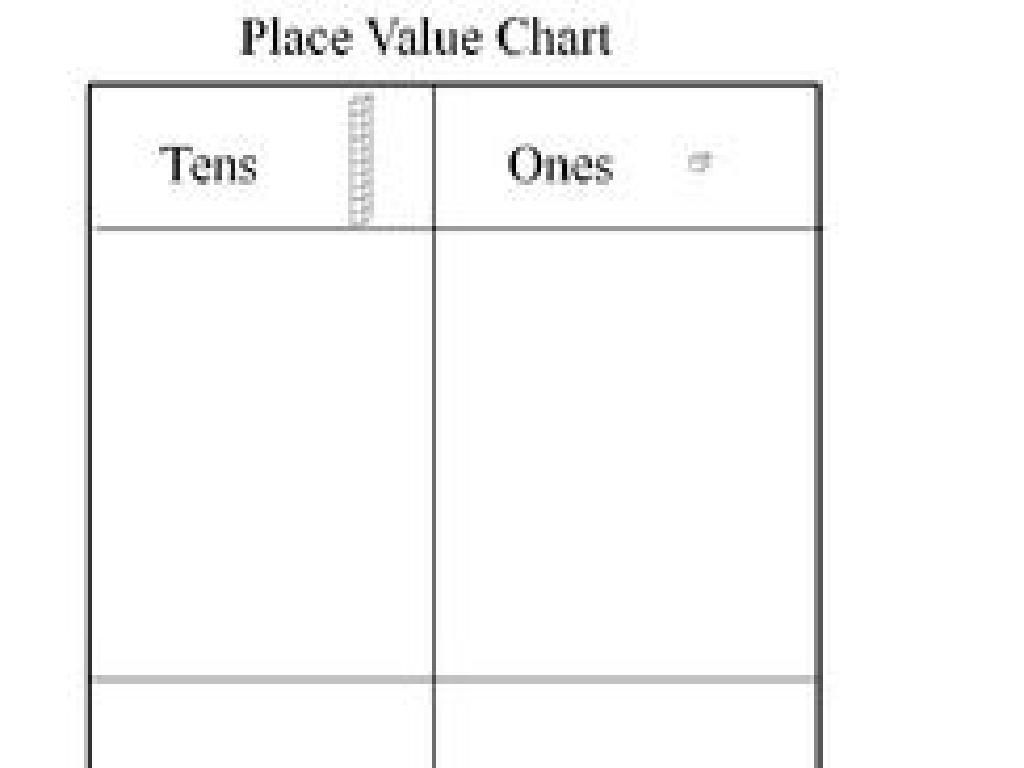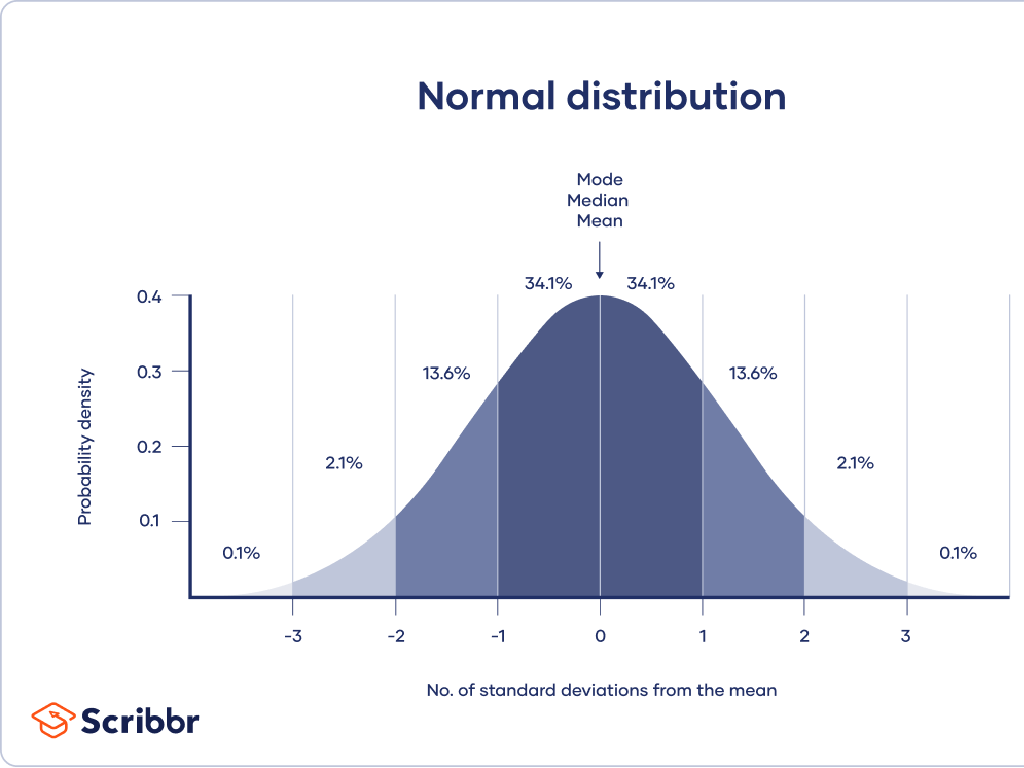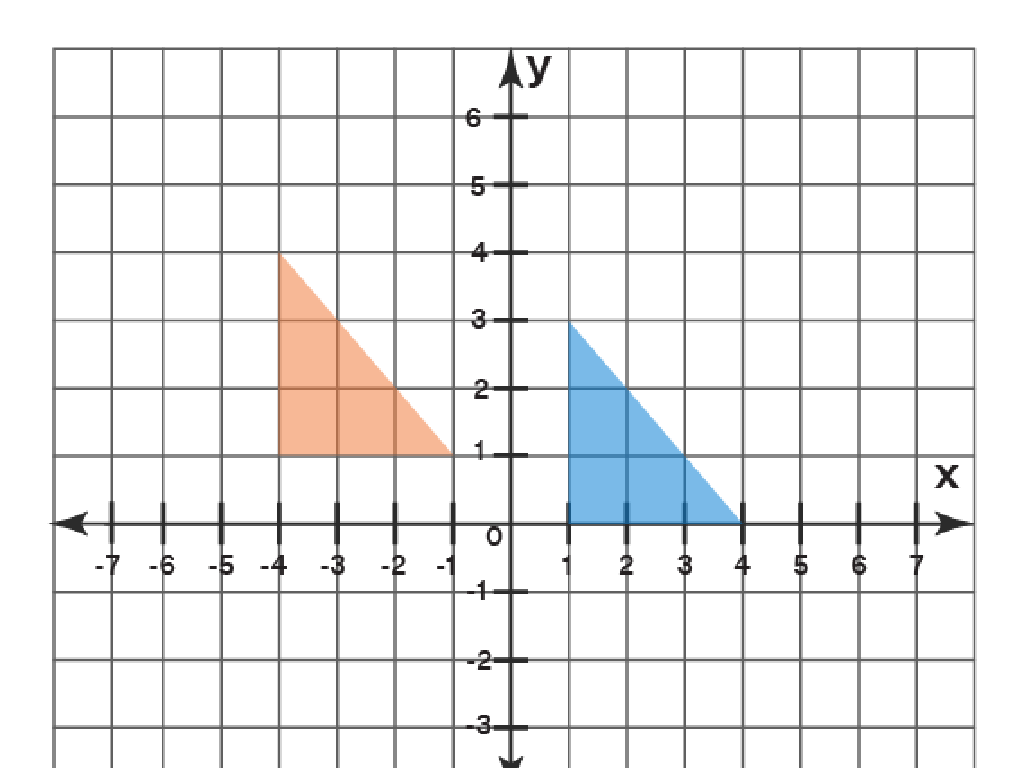Evaluate Absolute Value Expressions
Subject: Math
Grade: Eighth grade
Topic: Expressions
Please LOG IN to download the presentation. Access is available to registered users only.
View More Content
Evaluating Absolute Value Expressions
– What is absolute value?
– The distance of a number from zero on a number line.
– Absolute value examples
– |3| = 3 and |-3| = 3 show distance, not direction.
– Significance in math
– Used to express non-negative values of variables.
– Evaluating expressions
– Apply rules to solve |x| = a for x.
|
This slide introduces the concept of absolute value as a fundamental part of understanding expressions in mathematics. Absolute value represents the distance a number is from zero on the number line, regardless of direction, which is why both |3| and |-3| equal 3. Emphasize the importance of absolute value in ensuring that certain mathematical expressions always yield non-negative results, which is crucial in various fields such as engineering and economics. Demonstrate how to evaluate absolute value expressions with examples, and prepare to guide students through practice problems where they will apply the rules to find the value of x in equations like |x| = a.
Understanding Absolute Value
– Absolute value defined
– The absolute value of a number is its distance from 0 on the number line, regardless of direction.
– Distance from zero
– Consider the number line: -3 and 3 are both 3 units away from 0.
– Absolute value notation
– It’s represented by two vertical bars: |x| signifies the absolute value of x.
– Interpreting absolute values
– |5| equals 5 and |-5| also equals 5; both are 5 units from zero.
|
Begin the lesson by defining absolute value as a measure of how far a number is from zero on the number line, emphasizing that it’s always a positive distance. Use a number line diagram to visually demonstrate that both negative and positive numbers can have the same absolute value. Explain the notation and symbols used to represent absolute value, ensuring students understand that the bars do not signify multiplication. Provide examples to illustrate that the absolute value of a number is the number itself if it’s positive, and the opposite of the number if it’s negative, both resulting in a positive value. This concept is foundational for solving absolute value equations and understanding real-world scenarios where only magnitude is important, such as distance.
Properties of Absolute Value
– Absolute values are non-negative
– For any number a, |a| is always 0 or positive
– Identity property of absolute values
– If a is positive or 0, |a| equals a
– Opposite property of absolute values
– If a is negative, |a| equals -a
– Triangle Inequality
– |a + b| is less than or equal to |a| + |b|
|
This slide introduces the fundamental properties of absolute value, which are crucial for understanding how to evaluate absolute value expressions. Emphasize that absolute values are never negative, as they represent the distance from zero on a number line. The identity property states that the absolute value of a non-negative number is the number itself. Conversely, the opposite property tells us that the absolute value of a negative number is its positive counterpart. Lastly, the Triangle Inequality is a rule that helps in understanding the combined absolute values of two numbers. Provide examples for each property to solidify understanding, such as |3| = 3, |-3| = 3, and |3 + (-4)| d |3| + |-4|.
Evaluating Simple Absolute Values
– Absolute value of positive numbers
– |3| represents the distance of 3 from 0 on a number line, which is 3.
– Absolute value of negative numbers
– |-3| also represents a distance from 0, so it’s positive 3.
– Absolute value of zero
– |0| is 0 because it’s at the starting point, no distance from 0.
– Practice with examples
– Calculate |5|, |-12|, and |0| to practice understanding absolute values.
|
This slide introduces students to the concept of absolute value as the distance from zero on a number line, which is always positive. Start with simple examples like |3| and |-3| to show that absolute value measures how far a number is from zero, not its sign. Emphasize that the absolute value of zero is zero since it’s the starting point on the number line. Encourage students to practice with additional examples |5|, |-12|, and |0| to reinforce the concept. Provide guidance on how to think about absolute value in a real-world context, such as distances traveled, regardless of direction.
Evaluating Absolute Value Expressions
– Combine absolute values and operations
– Example: |7 – 10| calculation
– Absolute value of -3 is 3
– Example: |2x – 5| for x = 3
– Substitute x with 3, then find the absolute value
|
This slide introduces students to the concept of combining absolute value operations with arithmetic operations. Start by explaining that the absolute value of a number is its distance from zero on the number line, regardless of direction. Show how to evaluate the expression |7 – 10| by first performing the subtraction inside the absolute value, resulting in |-3|, which equals 3. Then, move on to the expression |2x – 5|, substituting x with 3 to get |6 – 5|, which simplifies to |1|, and the absolute value of 1 is 1. Encourage students to practice with additional examples and to remember that the absolute value symbol acts like a ‘bubble’ protecting the inside expression until the operations are complete.
Solving Absolute Value Equations
– Set up equations with | |
– Example: Solve |x – 4| = 3
– If |x – 4| = 3, then x – 4 = 3 or x – 4 = -3.
– Practice: Solve |2x + 1| = 5
– Follow the example to solve |2x + 1| = 5.
– Understand solutions’ meaning
– Solutions represent distances on a number line.
|
This slide introduces students to solving equations involving absolute values. Start by explaining how to set up an equation with absolute values, emphasizing that the expression inside the absolute value can equal the number or its opposite. Use the example |x – 4| = 3 to show the two possible solutions: x – 4 = 3 and x – 4 = -3, which simplifies to x = 7 or x = 1. Then, have students practice with |2x + 1| = 5, guiding them to apply the same principle. Finally, explain that the solutions to absolute value equations represent distances from a point on a number line, reinforcing the concept that absolute value measures distance from zero. Encourage students to visualize this and provide additional practice problems to solidify their understanding.
Real-World Applications of Absolute Value
– Temperature variation analysis
– Absolute values express temperature changes, regardless of direction.
– Tracking financial balances
– Gains are positive, losses are negative; absolute value gives net change.
– Measuring straight-line distance
– Distance is always positive; absolute value reflects total movement.
– Understanding displacement
– Displacement can be negative or positive; absolute value shows magnitude.
|
This slide aims to show students how absolute value is used in real-world scenarios. Temperature changes can be represented using absolute value to indicate the magnitude of change, not the direction. In finances, absolute value helps to understand overall gains or losses, ignoring whether they are upward or downward. For distance, absolute value is used because distance cannot be negative. Displacement, which can have direction, uses absolute value to represent the size of the shift. Encourage students to think of other examples where absolute value might be applicable in their daily lives.
Class Activity: Absolute Value Exploration
– Pair up and solve problems
– Discuss your solution process
– Share how you figured out the answers with your partner
– Present solutions to the class
– Explain your reasoning behind the answers
– What steps did you take to find the absolute value?
|
This activity is designed to foster collaborative learning and reinforce the concept of absolute value. Students should be paired up to work through a set of problems involving absolute value expressions. Encourage them to discuss their problem-solving strategies with each other to deepen their understanding. After solving the problems, each pair will present their solutions to the class, explaining the steps and reasoning they used to arrive at their answers. This will help students articulate their thought process and learn from their peers. Possible activities could include solving for absolute value equations, comparing absolute values, and applying absolute value to real-world contexts. Ensure that each pair has a different set of problems to maintain a variety of presentations.
Wrapping Up: Absolute Values
– Recap absolute value concepts
– Emphasize practice significance
– Regular practice solidifies understanding
– Homework: Worksheet completion
– Solve provided problems on absolute values
– Apply knowledge in real-world
– Use absolute values in daily scenarios
|
As we conclude today’s lesson on absolute value expressions, it’s crucial to revisit the key concepts to ensure students have a solid understanding. Emphasize the importance of practice in mastering mathematical concepts. For homework, students are assigned a worksheet that includes a variety of problems to reinforce their skills in evaluating absolute value expressions. Encourage students to apply what they’ve learned to real-world situations, such as finding the difference in elevation or temperature changes. This will help them see the relevance of absolute values beyond the classroom. Provide guidance on how to approach the worksheet and remind students to bring any questions they have to the next class.






